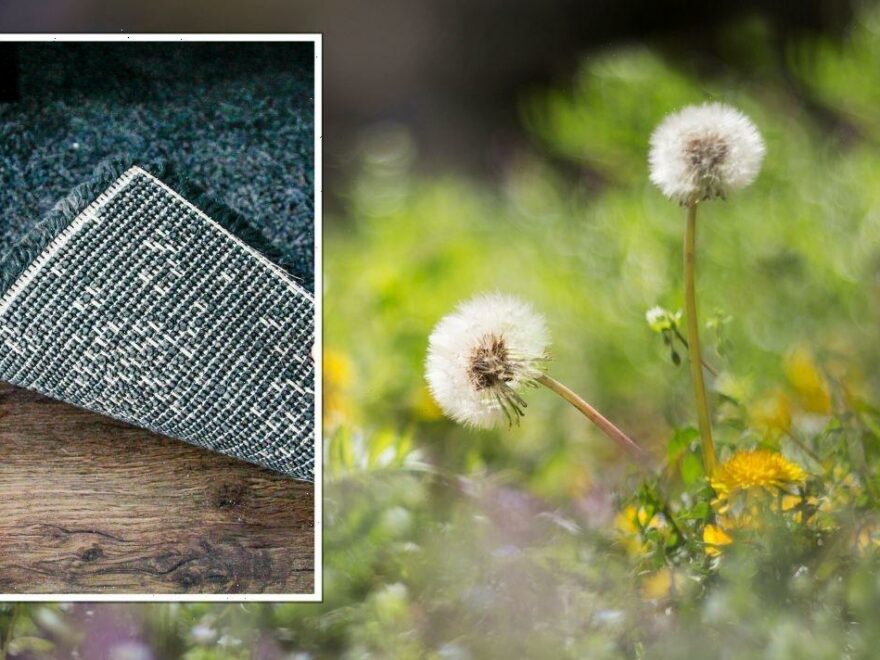Envirobond: How to remove weeds from your Paving stone joints
We use your sign-up to provide content in ways you’ve consented to and to improve our understanding of you. This may include adverts from us and 3rd parties based on our understanding. You can unsubscribe at any time. More info
There are a vast number of weed variations that are notorious in UK gardens, although the majority tend to inhabit weeds in the form of thistles, dandelions, couch grass and clovers to name a few. These have a tendency to pop up through cracks and corners of paths, but also smother large expanses of the lawn and once they appear, they can seem hard to get rid of. Prior to gardeners resorting to chemical-based weed killers, natural poison-free alternatives should be tried.
The odd weed that crops in the flowerbed or vegetable patch is best removed by hand pulling, however, on the more expansive weed plots, the following poison-free solutions work just as well as any herbicide.
Malcolm, a 68-year-old professional gardener from Bedford has told Express.co.uk which natural method is the “most effective”, yet easy and cheap way to remove weeds from outdoor spaces.
He said: “The most effective and cheapest way to suppress weeds in a flower bed is to use a weed suppressing membrane.
“This is just a layer you put down before covering with soil or gravel etc.”
For those opting to use this method the gardening pro suggests making “an incision when you want to plant anything”.

Malcolm continued: “The greatest thing about this is you don’t actually have to buy it.
“The easiest and cheapest thing to use is just a piece of old carpet, or an old bit of tarpaulin.
“It doesn’t even need to be black, it just has to be dark/thick enough to keep out the light.”
Tarpaulins are a thin waterproof sheet of woven plastic that is laminated.
Both carpets and tarpaulins are a fantastic type of mulch to prevent weeds from returning.
DON’T MISS:
How to remove yellow duvet stains using ‘easy’ 4p hack [TIPS]
Oven cleaning: ‘Extremely easy’ 29p way to clean your oven glass [EXPERT]
Laundry task to ‘always’ do when washing clothes for ‘best results’ [INSIGHT]
Mulches are loose coverings or sheets of material placed on the surface of soil.
They can be applied to bare soil or to cover the surface of compost in containers
Mulching is generally used to save water, suppress weeds and improve the soil around plants but it also gives your garden a neat, tidy appearance and can reduce the amount of time spent on tasks such as watering and weeding.
This can be split into two main groups; biodegradable and non-biodegradable.
Both types suppress weeds by blocking sunlight which is needed to germinate and grow weed seeds, and conserve moisture by reducing evaporation from the soil surface.

When it comes to removing weeds from patios, the gardening enthusiast generally opts to use a “long-handled weeding tool” rather than his previous method of using a “weed control electric flame gun”.
Malcolm said: “As for patios, I used to use a weed control electric flame gun, but my daughter, who works for bills comparison service Love Energy Savings, explained that this wasn’t the most ecologically sound approach that I could use and I could save myself just under £40 a year from not buying the canisters.
“Plus the really good ones are £100+ to buy, so not the cheapest option either.
“Now I’ve realised how expensive that was to run, I use a long-handled hand held weeding tool, It’s manual, but it’s length means you don’t have to bend over to hand-pick the weeds yourself (and now I’m in my late 60’s I appreciate anything that saves extra strain on my knees).”
To kill off “pernicious weeds” the gardening expert suggests gardeners use his sandwich bag trick.

He said: “Killing off pernicious weeds like bindweed can be a really tough job.
“It has an extensive root system and if even a little bit of it is left it will multiply.
“When I come across it, first I put a stake next to it so that it has something to grow up.
“When it’s as tall as it can go on the stick, you remove it, leaving an unsupported tendril.
“I then shove this into a plastic sandwich bag and clip it shut.
“You then leave these bags – to be safe until the following year. Then all you have to do is collect the sandwich bags and you should be weed free.”
Source: Read Full Article
